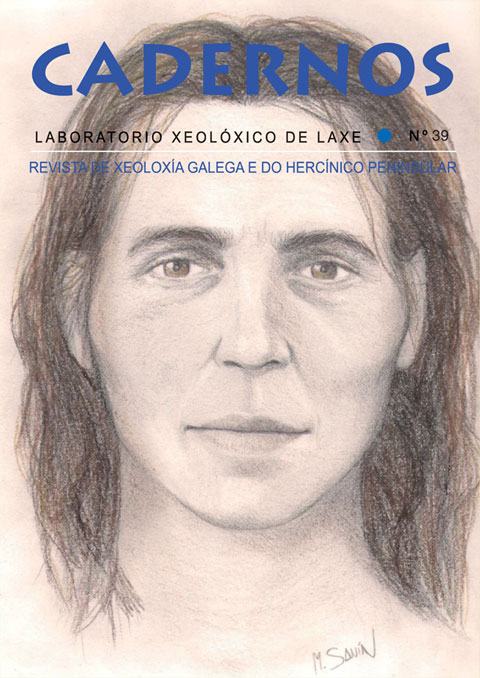Informe antropológico forense: aproximación facial. Proceso de aproximación facial forense
Contido principal do artigo
Resumo
Este informe completa el estudio antropológico de los restos humanos de la cueva de Chan do Lindeiro (Ancares, Lugo). En el se intenta realizar una aproximación facial al rostro del individuo estudiado una joven mujer. Aunque en el estudio antropológico se había realizado ya el estudio preliminar de aproximación facial mediante un retrato que se había incorporado al trabajo, en esta nueva propuesta incluimos los datos para realizar una escultura del individuo estudiado.
Palabras clave:
Descargas
Detalles do artigo
Citas
De Greef, S., and G. Willems (2005). Three-dimensional cranio-facial reconstruction in forensic identification: Latest progress and new tendencies in the 21st Century. Journal of Forensic Sciences 50(1): 12-17.
De Greef, S., Claes, P., et al. (2006). Large-scale in-vivo Caucasian soft tissue thickness database for craniofacial reconstruction. Forensic Science International,159S, S126-S146.
George, R.M. (2007). Facial Geometry. Graphic Facial Analysis for Forensic Artist. Charles C. Thomas Publisher Ltd. USA.
Hayes, S., Taylor, R., et al. (2005). Forensic facial aproximation: An overview of current methods used at the Victorian Institute of Forensic Medicine/Victoria Police Criminal Identification Squad. The Journal of Forensic Odonto-Somatology 23(2): 45-50.
Quatrehomme, G., Balaguer, T., et al. (2007). Assessment of the accuracy of three-dimensional manual craniofacial reconstruction: a series of 25 controlled cases. lnternational Journal of Legal Medicine 121: 469-475.
Reichs K.J. (1998). Forensic Osteology. Advances in the identification of human remains. Charles C. Thomas Publisher LTD USA, Second Edition.
Rynn, C., and Wilkinson, C.M. (2006). Appraisal of traditional and recently proposed relationships between the hard and soft dimensions of the nose in profile. American Journal of Physical Anthropology 130: 364-373.
Serrulla, F. and Gómez, M. (2008). Aplicaciones de la técnica de aproximación facial forense en la identificación humana individual. Cuadernos de Medicina Forense nº 53-54 Sevilla.
Serrulla, F., Grandal d'Anglade, A., Vtlar, S., and Gomez, M. (2011). Aproximación facial y paleodieta en un esqueleto de la necrópolis de El Vergel (Ávila-España). Munibe (Antropologia Arqueologia) 62 (341-349).
Stephan, C. N. (2002a). Facial approximation: falsification of globe projection guideline by exophthalmometry literature. Journal of Forensic Sciences, 47(4), 1-6.
Stephan, C. N. (2002b). Position of superciliare in relation to the lateral iris: Testing a suggested facial approximation guideline. Forensic Science International, 130, 29-33.
Stephan, C. N. (2003a). Anthropological facial “reconstruction” - Recognizing the fallacies, “unembracing” the error, and realizing method limits. Science and Justice, 43(4), 193-199.
Stephan, C. N. (2003b). Facial approximation: An evaluation of mouth width determination. American Journal of Physical Anthropology, 121(1), 48-57.
Stephan, C. N., Henneberg, M. (2003). Predicting mouth width from inter-canine width –A 75% rule. Journal of Forensic Sciences, 48(4), 725-727.
Stephan, C. N., Henneberg, M., et al. (2003). Predicting nose projection and pronasale position in facial approximation: A test of published methods and proposal of new guidelines. American Journal of Physical Anthropology, 122, 240-250.



